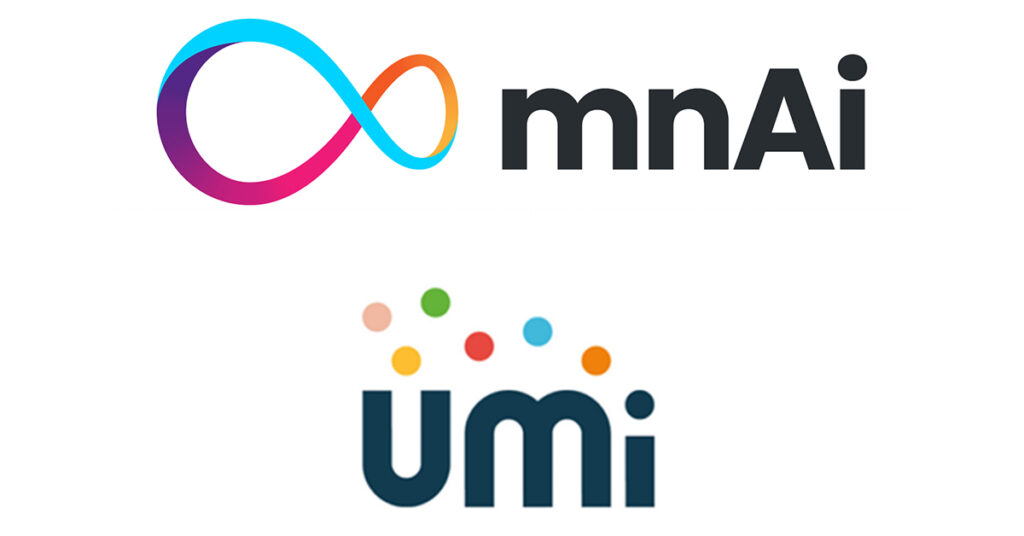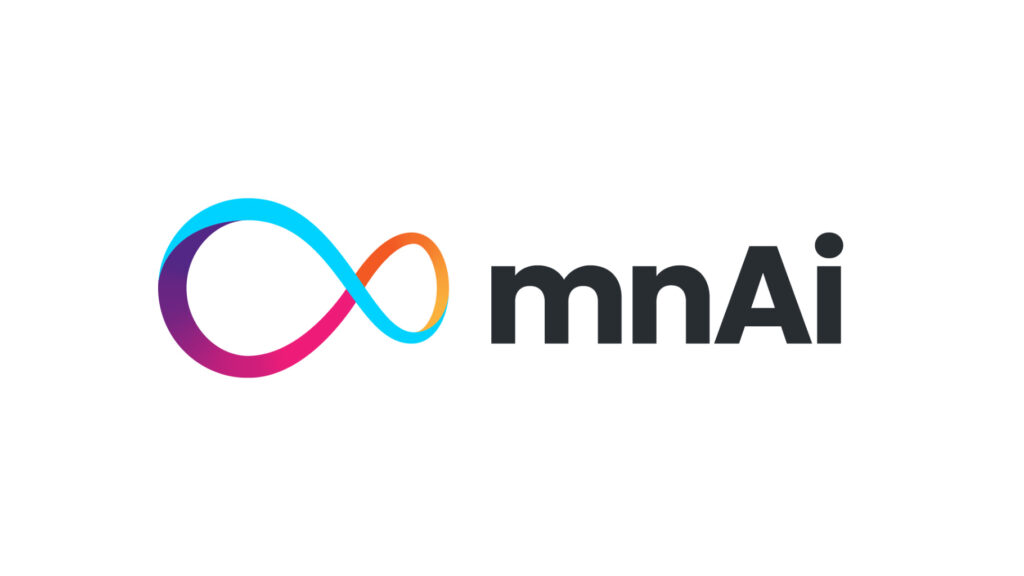Can the UK tech sector really quadruple by 2032?

In the midst of a slowdown precipitated by a number of global and domestic factors, one major success story in the UK in recent years has been the continuing growth of the tech sector. In 2022, with the impact of the global Covid-19 pandemic spreading into almost every corner of economies across the world, the UK tech sector became the third to reach a valuation of $1tn – a landmark that only the US and China hit first. Arriving there ahead of a rapidly-developing India and the UK’s fellow G7 members Germany, Japan and France was a reminder of the UK’s punching power at a time when its strength in other areas was being questioned. Recent forecasts are now offering even more optimism. A report published at the end of March by Tech Nation predicted that the UK tech sector could quadruple in value to $4tn within the next decade, if government policy follows certain criteria to ensure the sector has the best chance of realising its potential. What is clear is that data platforms such as mnAi can play an increasingly important role in helping the tech sector in the UK reach such a lofty, but achievable, target. Illustrative of this is that one aspect of the key findings and recommendations from the report relates to diversity, or the relative lack of, in the UK tech sector. One of the mnAi platform’s key components is its comprehensive diversity and inclusion data for millions of UK companies and individuals. Over the last five years, the percentage of tech sector workers from underrepresented ethnic groups has risen, but only by around 2%. Furthermore, research shows that males outnumber females by three-to-one and on average are also paid less than their male counterparts. “While the data shows that some progress is being made, it’s slow and we all know that UK tech still has a lot of work to do,” according to Elizabeth Scott, OBE, Client Engagement Director at Tech Nation. “As well as doing more to support under-represented founders access the support and funding they need, as an ecosystem we still need better visibility and access to tech jobs. Achieving representation in the UK tech workforce would give everyone a seat at the table, enabling changes to the way businesses are run, new ideas and value creation.” Figures also show that the UK ranks third globally for VC investment into its tech sector, having reclaimed that position from India in 2022. The UK remains comfortably ahead of all of their European neighbours, but over the last five years it hasn’t been able to match the year-on-year results recorded by France, whose tech sector has achieved growth every year for the past decade. To avoid being caught up by established nations close to home and by emerging economies further afield, Government and business must work together if the UK is to retain its reputation and position as a global force. “The UK is still the number one tech hub in Europe by some margin, and number three in the world,” commented Yoko Spirig, co-founder and CEO of Ledgy. “But other tech hubs like Berlin and Paris are building talent and investment capacity all the time, rapidly closing the gap – so [the UK] can’t afford to rest on its laurels. For the UK to maintain this position and continue to attract tech firms, it needs to continue creating and fostering the optimal environment for companies to come and operate here.” If these calls to action are heeded by those who make key policy decisions, the future for all of us in the UK tech sector can be very exciting indeed. To book a free, interactive demo of mnAi’s data platform, click here Can the UK tech sector really quadruple by 2032?
The rise of the machines – generative AI for a brighter future

Once the stuff of the sci-fi novelist’s fantasies, machine learning and data analysis is our present and future reality, and the revolution is under way… The rise of the machine has long ceased to be a sci-fi or dystopian concept, with generative AI being the natural next step forwards. Also known as deep learning, generative AI is now arming machines to make predictions and perform tasks based on sets of data, without any human interference in the process. Recently, the press has been dominated by this technological advancement in how machines learn. Until now, machine learning needed humans to classify data, but generative AI is unsupervised. Large amounts of data are fed into the machine, which it then uses to make predictions and calculations in many different forms. Many of these generative AI forms are visual, such as images and video, however, it can now generate code, summarise and write text, and even create audio. If you give DALL-E a descriptive word, it will create a painting based on it. Meanwhile, straight out of the Isaac Asimov storybook comes Chat Generative Pre-trained Transformer (ChatGPT). According to its developers, ChatGPT “interacts in a conversational way. The dialogue format makes it possible for ChatGPT to answer follow-up questions, admit its mistakes, challenge incorrect premises, and reject inappropriate requests”. As exciting as it already seems right now, the functionality is continuing to grow and rapidly improve. Development is progressing at an exponential rate. This has only been possible because of the involvement of giants like Meta Platforms, Microsoft and Google, which have been working on private and open source advanced GPT models. But all of this comes with a warning. Along with the creative potential and transformational properties of generative AI comes complications of a human cost in the form of copyright infringement, discriminatory content and misinformation. This, of course, means that tech leaders bear a heavy burden of responsibility on their shoulders – along with the unprecedented advantages, there needs to be tough and evolving regulation. A good example of this would be the sometimes error-prone ChatGPT, which has produced incorrect and inappropriate answers to questions. This stems from using the entire internet as its training set, something that most college professors would have numerous concerns over. This particular pitfall is avoided by companies that employ generative AI for a specific use. In these circumstances, the machine can be fed specific data sets which allows fine-tuning. The massive growth of generative AI has also seen huge investment in the sector. It was recently reported that it’s “the next watering hole for venture funds. According to Pitchbook, venture capitalists have increased investment in generative AI by 425% since 2020, to $2.1bn”. And in February, BlackRock trumpeted that there’s “nothing artificial about investment opportunities in generative AI”. On top of this, generative AI’s head-turning capabilities have not only caught the eye of Google, but earned it an offer of marriage. The multinational tech behemoth is incorporating AI into its Workspace cloud applications, including Gmail, Docs, Slides, Sheets, Meet, and Chat. According to Marktechpost, “users will be able to employ generative AI’s power to create, connect, and collaborate in ways that have never been possible.” This rapid rise in the capabilities of generative AI allow it access to areas of our personal and professional lives that would once have been unimaginable. Now the future not only seems more efficient with its presence, but infinitely more fascinating. And although generative AI is stealing most of the headlines at present, AI tools lie across a broad spectrum. They can lend coherence to data points and resultant insights, efficiently streamlining the research time needed for accurate due diligence, supply chain analysis, lead generation and other services covered by the mnAi data platform. Yes – AI plays a significant role in what we do. But, also yes – this article was written by a human… can you tell? To book a free, interactive demo of the mnAi data platform, click here
mnAi confirmed as official Data Partner for UMi projects

mnAi are proud to announce a new collaboration with UMi, confirming mnAi as the official Data Partner across a wide range of upcoming UMi projects throughout 2023 and beyond. mnAi’s data platform will help to power UMi’s forthcoming Scottish Export Index and Northern Powerhouse Export Awards, plus UMi’s Meet The Buyer projects later in 2023. As a result of the partnership, mnAi will provide UMi with data and analytics on 11.8m+ UK companies, approx. 170m+ statutory records and more, using 12.5bn+ data points. This latest agreement is further evidence of how mnAi is partnering with UK companies from various sectors as they look to utilise our industry-leading data platform and technology. mnAi Managing Director, Ricky Cowan: “Here at mnAi we pride ourselves on our business partnerships. The agreement with UMi as their official Data Partner is a very exciting opportunity for us to showcase our award-winning platform and data to a wider audience across a variety of interesting projects. “The value of data is becoming more significant in decision making and mnAi sits at the forefront of data insights and analysis.“ UMi Senior Campaigns and Events Manager, Paul Clark: “We are delighted to have mnAi working with us as our Data Partner. Their data will be extremely valuable to us when planning and delivering our campaigns and projects across the UK. “Now more than ever it can be challenging to keep up with the changing business landscape. By working with mnAi, we’re better able to stay ahead of the curve and benefit from their expertise to stay up to date on the latest trends, best practices and information.” To book a free, interactive demo of the mnAi data platform, and learn how it can transform your company – click here
The Covid-19 years in facts and figures

The pandemic caused personal and industrial chaos, but as we emerge from the ashes, what have we found out, and where is it leading us? It seems like we’ve lived with Covid-19 for a lifetime, but it’s only been three years since it reached our shores. In fact, the number of cases of Covid in the UK only peaked on 5 January last year, when the daily infection count hit 275,646 on the dial. That extraordinary number is dwarfed by the total number of Covid infections in the UK, which as of writing stands at 24,448,729. It’s impossible to ignore the tragic scale of personal loss and human suffering caused by the virus, but it’s also important to study how Covid has impacted the business community and consequently individuals in the working population, as well as the financial cost to our community. So, as we move past the third anniversary of our first acquaintance with the virus, there are some extremely interesting figures to mull over. The once peculiar sounding Coronavirus Job Retention Scheme was created to deal with the immediate impact of lockdowns on a paralysed UK workforce. The scheme applied from 1 March 2020 and ended on 30 September 2021, and provided grants to employers so they could retain staff for post-pandemic days by furloughing these employees at up to 80% of their wages, although various caps applied. In total 11.7 million employees were furloughed at a cost of an eye-watering £70 billion. The Week recently reported that at the height of the first national lockdown, UK GDP “fell by a record 19.4% before rebounding 17.6% as the country reopened over the summer”. Furthermore, according to the Office for National Statistics there was an unprecedented level of change in GDP not seen “since ONS measurements began in 1955”. Pubs, restaurants, and accommodation services were particularly badly affected, and made the highest overall value of claims totalling £12.87 billion. But the whole picture shows that out of 3,860,831 active companies in the UK, 650,463 (17%) received furlough funding. The aftermath witnessed a lamentable roll call of 54,011(1.4%) active companies folding up after receiving furlough. Another revealing statistic surrounding the post-pandemic workforce is that there are now almost 400,000 more economically inactive adults aged 50 to 64 than during those pre-Covid days. James Reed, CEO and chair of recruitment firm Reed, predicts that 2023 will most likely see the return of some of these vastly experienced workers, which will give all surviving businesses an enormous boost in knowledge and skill sets. There are also some interesting figures rooted in the middle of the pandemic, about what we now widely recognised as a pivotal change in our working practices. The most immediate consequence of lockdown was the proportion of people who reported that they were working exclusively at home. This rose from 5.7% of workers in January and February of 2020 to 43.1% by April of the same year. And in a positive sign for the future survival of the office workspace, 48% of at home workers reported the need to communicate more to demonstrate their value, while 60% said that they felt less connected to colleagues. This simple and very human dimension to how efficiently we function at work, has led to a hybrid mix of at-home and in-office employee presence. It therefore comes as no great surprise that the Office for National Statistics reported that in the most recent period (25 January to 5 February 2023) around 40% of working adults reported having worked from home at some point in the past seven days. This hybrid model looks like it’s here to stay, and the resulting new balance of home and workplace satisfaction can only benefit all employers and employees. After enduring so many negatives over the last three years, there is at least one tangible positive to emerge. To book a free demo of mnAi’s data platform – where you can access business data relating to Covid-19 – click here
The new and improved Data Protection and Digital Information Bill

The DPDI was presented to much fanfare in early March – but what does it promise to deliver? Back in 2018 the EU introduced its General Data Protection Regulation (GDPR), a new, one-size-fits-all set of rules covering personal data. It went EU-wide in May of that year, and ushered in tougher rules on the processing and storage of personal data, as well as new demands on consent. To the consumer it marked the introduction of a never ending flurry of consent pop-ups, and to businesses a murky picture of how they should handle their customers’ information. But all this is about to change. On March 8th, Technology Secretary Michelle Donelan introduced the Data Protection and Digital Information Bill (DPDI) to the UK parliament. The proposed reforms to the data rules will not only provide a much needed clarity of the new UK-specific legislation, but is also being promoted as a vessel for additional pro-growth opportunities for businesses. One of the most important aspects of the bill is that these changes to three pieces of existing legislation work concurrently with maintaining a high standard of protection for customers, by preserving the key ethical principles of existing laws. The result will see simplified administration responsibilities for small businesses, and a knock-on predicted saving of £4.7 billion for the UK economy over the next 10 years. Some of the spotlight proposals include: A reduction in the amount of paperwork needed for organisations to demonstrate compliance. No additional costs, as long as a business is compliant with current data rules. This new framework will support and boost international trade, and do so cost-effectively. Fine tuning the rules surrounding personal data and consent. This will give organisations an improved confidence when processing customers’ information. Fine tuning the rules surrounding personal data and consent. This will give organisations an improved confidence when processing customers’ information. Allay commonly held fears about using AI technologies to process data, by clearly defining when robust safeguards do and don’t apply to automated decision-making. Significantly, the DMA has been instrumental during the consultation phase. DMA’s CEO Chris Combemale chaired the Business Advisory Group which sat side-by-side with officials and the Secretary of State and Department for Science, Innovation and Technology DSIT (formerly DCMS). In a statement, Combemale underlined how important clarification and supporting business was fundamental to the proposals: “The DMA has collaborated with the government throughout the Data Protection and Digital Information Bill (DPDI)’s development to champion the best interests of both businesses and their customers. We are confident that the bill should act as a catalyst for innovation and growth, while maintaining robust privacy protections across the UK… Attracting and retaining customers and donors is a fundamental legitimate interest of businesses and charities, so we are delighted the government has acknowledged this in the reforms to help drive innovation and growth.” Next on the reform list affects the marketing community, particularly the tireless efforts of the charity sector – there will be an extension to the soft opt-in for email to non-commercial organisations. This will create new freedoms for charities to communicate with existing donors and volunteers as easily. Another welcome change for both sides of the fence will be an expanded range of exemptions to cookie consent requirements. There’s barely an internet surfer on the planet who craves more consent banners. This is especially true for visitors to ecommerce and charity sites which don’t advertise third party services or products. This can only improve the customer’s experience, which, in turn, should increase traffic and prolong activity on websites. Rogue callers are also in the crosshair. Fines for nuisance calls and texts will increase from £500,000 to up to 4% of global turnover or £17.5 million, whichever is greater. That’s a much sharper pin-prick, and will increase consumer trust. The bill is still progressing with the DMA remaining very much in the picture. According to Combemale, all parties are seeking “improvements such as clarity on the scope of industry codes of conduct as specified in UK GDPR. This is significant for creating an industry ethical and legal framework to build trust in the digital economy.” With these new clarifications, plus the new focus on successful interactions between customers and the business and non-profit industries, the use and handling of personal data is entering a modern era. This will provide yearned for reassurance and safeguards in an ever more digital world.
Morgan Sindall Group Procurement Director, Graham Edgell: construction, regeneration and the supply chain emissions conundrum

Why are Scope 3 emissions important to a company’s supply chain? And what are big companies like UK construction and regeneration giant Morgan Sindall doing to offset emissions and accelerate their journey to Net-Zero? Regular readers of our blogs will be well versed in the key differences between Scope 1 and 2 emissions, and Scope 3 If you need a refresher, Scope 3 are those indirect emissions from a supply chain, which are out of a company’s direct control but can have a serious impact on that company’s overall emissions score. mnAi’s digital platform incorporates exclusive emissions data that makes the auditing of Scope 3 emissions much more effective. Up to now, it has been a conundrum for companies of any size. To delve deeper into this, and explore the related issues faced by large companies and the potential solutions, we sat down with Morgan Sindall’s Group Procurement Director, and Supply Chain Sustainability School board member, Graham Edgell. “Scope 1 and Scope 2 are in our control, whereas Scope 3 emissions aren’t – that’s the basic truth of the situation,” says Graham. “Today, for example, Morgan Sindall has 500 mobile factories on the ground at any moment. This means we currently run around 30 different supply chains – because the supply chain that works in the north east of England, doesn’t work in Kent. And to complicate things further, the construction supply chain isn’t the same supply chain as the infrastructure supply chain.” “Then there’s the sheer scope and variety of the projects Morgan Sindall works on. This also presents challenges around keeping track of, and being able to influence, the Scope 3 emissions from within the supply chains.” “We’re working on a project on the M27 at present… but we’re doing work on the Thames Tideway at Sellafield and rail projects in Devon. They’re all different sectors. The highways team don’t work on rail, the rail team don’t work on nuclear plants. Apart from the general civil engineers and builders, there’s very limited commonality.” And then there’s all the different Scope 3 categories. “At present, Scope 3 emissions are split into 15 or 16 different categories,” Edgell says. “That’s a lot for a subcontractor to understand. As subcontractors of ours, we want them to keep accurate records of their Scope 1 and Scope 2 emissions, as those are the ones that influence our Scope 3. But of course, these companies also have their own Scope 3 emissions to think about.” All of these factors, combined with the lack of clear Executive legislation and centralised best practice guidelines, have made Scope 3 emissions almost impossible to quantify and monitor for large companies like Morgan Sindall. Edgell reveals that Morgan Sindall has spoken to data companies in the USA and Europe, but their proposed solutions have fallen short. So far. But if there’s one thing that all companies – however larger or small- can do better to improve the accuracy of forecasting Scope 3 emissions, what is it? “The most simple difference a company can make is to record every litre of fuel it buys and record the numbers on energy meters,” says Edgell. “Once you’ve got that information and it’s been planted in, is it going to cover everything? No, it won’t – but it’ll take us half the way there. And it’s transitional. It’s not a solution to climate change, but it’s where we are right now. Up to now, there hasn’t been a data company that has come close to helping us to solve this.” Another thing that becomes obvious when speaking to Graham is that not all large construction companies are doing as much to offset their carbon emissions as Morgan Sindall. “Our biggest initiative is at the Blenheim Estate, in Oxfordshire,” Edgell says. “We’re planting 280,000 trees. 260,000 are now already in the ground and we used the acorns from the ancient oak forest to ensure genetic transparency throughout it. Some of these oaks are 1000 years old and we collected their acorns to plant. We’ve got 27 different species of tree to offset emissions, benefit the local environment and combat climatic change. “Elsewhere, another big nature initiative is our partnership with the RSPB. We have worked closely with them over the purchase of 54 hectares at Lakenheath Fen reserve in Norfolk.” “The RSPB were struggling to purchase the land that connected their other pieces of land in the area and we wanted to work with them and to help. The wetlands there are really flourishing and it’s resulted in, amongst other things, the return of cranes to the UK for the first time in 400 years.” 400 years? That’s some pretty impressive data… For more information about mnAi’s exclusive emissions data, click here
Due diligence and finding the next tech unicorns

‘Tech unicorns’ come in many colours, but their financial strategy is cloudy. Examining some tech unicorn failures reveals why up-to-date data can make due diligence as easy as ABC… Nobody has topped venture capitalist Aileen Lee’s vivid 2013 description of a $1bn+ startup company as a unicorn. It’s a fairytale concept, and yet astonishingly, as of February 2023, there are in excess of 1,200 unicorn companies listed worldwide. Understandably, they’ve been a magnet for investors, with a myriad of column inches devoted to their stories. However, in some notable boom and bust cases, the publicity morphed into goldfish-bowl documentaries, such as WeWork: Or the Making and Breaking of a $47 Billion Unicorn. Even more unflattering was the lengthy eight-episode drama The Dropout, minutely detailing the rise and fall of Elizabeth Holmes’ company Theranos. The number one take-home was the unquestioning belief in the failed unicorns’ self-assessed value and viability. Such headline-attracting melodrama has done nothing for the current widespread perception of the unicorn startup, but what does the bigger picture look like? At the end of January, Forbes were keen to fill us in. Accompanying a cartoon of a hospitalised unicorn, former Big Four financial statement auditor Matt Durot detailed the woes of 44 startup founders who are now “nearly £100 billion poorer than they were a year ago”. Add to this the influential US Securities and Exchange Commission’s objection to unicorns’ lack of transparency about their shareholder structures, due to their status as private, unlisted companies, and you have the resulting mix of government suspicion and investor wariness brought into the equation. Even at the end of 2018, when summing up the demise of Theranos, Mary Juetten, attorney and founder/CEO of Traklight, gave the following warning: “It’s vital that entrepreneurs believe in themselves and their ideas, but that belief and drive are best paired with advisors willing to speak the truth, even when it might be painful, and a willingness to admit mistakes, shortcomings and even defeat. Honesty goes a long way in avoiding a myriad of potential startup problems.” It’s a nice sentiment, but can investors and business relationships really rely on this level of honesty, when a CEO is heavily entrenched in the success of their enterprise? This seems naive when you study CBInsights report that amongst 252 startup horror stories, e-commerce platform Nice Tuan was a prime offender in misleading potential investors and business contacts. The article detailed that “goods were sold at below cost to entice customers”, and “fake buyers appeared at the end of each month to meet sales targets”. Sales targets, incidentally, which Nice Tuan estimated to be 80 billion Yuan per month – in reality they barely achieved two million Yuan in the same time frame. On top of that, the company was fined 1.5 million Yuan for ‘fraud’, ‘dumping’ and ‘misleading advertising’. It’s no wonder that unicorns cannot be valued on the reassurances of their CEOs alone. Understanding all of this is the key to finding a solution which not only informs, but also enables strategically intelligent investment and business relationships. It simultaneously reveals how mnAi and AI-assisted analysis can be used to better identify the startups with genuine market potential. From new suppliers to financial checks, undertaking comprehensive due diligence is an essential part of everyday business life. mnAi collates millions of data points on active UK companies. With in-depth analysis on hard-to-find data points, which identify potentially damaging or beneficial hidden director networks, advanced financials, debt, investments, and more, mnAi offers invaluable tools that support the due diligence process. To book a free, interactive demo of the mnAi platform, click here
mnAi confirms acquisition of Unlisted Limited

mnAi is delighted to announce the acquisition of private company valuation specialists Unlisted Limited, a move that will further enhance mnAi’s data driven insight practice. The acquisition of Unlisted Limited is the second acquisition undertaken by mnAi in the last 12 months, following Regulation Technologies Limited, which was acquired in March 2022. Unlisted is an AI-powered SaaS platform that provides accurate and fully automated private company valuations and analysis using advanced machine learning technology. “This acquisition marks the expansion of mnAi’s data capability to support and enhance our predictive modelling technologies,” said mnAi CEO, John Cushing. “With demand for private market valuations increasing in uncertain economic times, the technology and data created by the Unlisted team will add significant value to our existing data set and we’re excited to integrate this in the coming months. “The acquisition and subsequent merger of Unlisted into mnAi provides us with all the resources and support we need to build out our valuation data practice in the UK and beyond,” said Unlisted CEO, Amandeep Sahota. “With mnAi’s wide breadth of data assets and deep pool of expertise, we are looking forward to becoming the go-to provider for these high-value insights.”
Business in crisis – how data is helping to navigate a perfect storm

Thrifty consumers, soaring inflation, and eye-watering energy costs are combining to take more companies to the brink of insolvency than at any time since the financial crisis of 2009. Data solutions offer many positives but are they the knight in shining armour we now need to manage the next phase of growth? 2022 saw the UK experience accelerating inflation, while the Bank of England slammed on the brakes by raising interest rates to their highest level in 14 years. So, it’s no wonder that the economy stalled. The consequent effect on British companies has been profound, and saw insolvencies hitting 22,109 for the year 2022 in England and Wales – the highest figure since 2009. The next incoming tide of bad news arrived in early January. Wave number one brought the UK Treasury announcement of a slash in support for “non-domestic” energy customers. Wave number two simultaneously rolled in via recent figures presented by the British Retail Consortium (BRC). Their information showed that prices in British shops in January were 8.0% higher than a year before. This was led by a 15.7% increase in the cost of fresh food, while overall food prices, including longer-life goods, rose by 13.8%, and non-food prices were up by 5.1%. In all, Britain’s official consumer price index inflation measure showed that food and drink prices soared by 16.8% in the year from December ’21. To put this in perspective, this is the largest gain since 1977. “Supply-chain pressures, rising inflation and high energy prices have created a ‘trilemma’ of headwinds,” said Samantha Keen of EY-Parthenon and president of the Insolvency Practitioners Association (IPA). “This stress is now deepening and spreading to all sectors of the economy as falling confidence affects investment decisions, contract renewals and access to credit.” As a consequence, confidence in businesses is weakening across the board. Catherine Atkinson, director in PwC’s restructuring and forensics practice, sounded the alarm that “creditors appear nervous”. She also warned that last year witnessed a fourfold increase in “winding up petitions”, signalling a loss of confidence among banks and other creditors. This fourfold increase also included companies which voluntarily opted to be wound up. David Kelly, head of Insolvency for PwC UK, said: “It’s a clear sign that many directors are taking the difficult step to accept they have reached the end of the road.” Pointing to those at most risk, Inga West, restructuring counsel at Ashurst, told the Telegraph that smaller businesses are bearing the brunt of the crisis so far, as they tend to have fewer resources to ride troubled waters. However, she warned that bigger names including Byron, Paperchase and Flybe could be just the start. But there may be a glimmer of light breaking through the clouds. No sooner had the Bank of England raised interest rates by another 0.5% on 2 February, than it announced that inflation is expected to start falling from the middle of 2023 to around 4% by the year’s end, and on target for 2% after that. We’re also currently witnessing welcome falls in energy prices, which it’s hoped will continue. However, the million dollar question on everyone’s lips is which companies will ride out the storm, and which will be consumed by it? Finding the answer is exactly where data technology companies come in. The evolution of this industry means financial due diligence can be more accurate and comprehensive than ever before. In the current financial climate, undertaking comprehensive due diligence in regard to those you do business with is an essential part of continued success. mnAi supports this due diligence via its in-depth analyses on hard-to-find data points including risk, hidden director networks, advanced financials, debt, and investments. With intelligence on over nine million UK companies from multiple sources and collating it into a single, searchable database of over 12 billion data points, users now have access to a single unified source of data updated in real-time with 340 different data fields and in short, can help put your company in the best possible position to navigate this period of instability. To book a free, interactive demo of the mnAi platform click here
Transparency matters… even if Brits aren’t good at it

In a country where “minding our own business” is a national obsession, being open about business matters doesn’t come naturally. Push through the discomfort, though, and greater business openness can benefit everyone, as guest columnist Cam Winstanley writes… Do you know how much profit your company makes? How you compare to your closest competitors and how your sector is performing in general but also geographically? And what about your own situation? Is your salary band reflective of the industry average? Are your colleagues earning more than you for doing a similar job Britons have traditionally been characterised as reluctant to ask awkward questions, particularly when it comes to financial matters. It’s therefore no surprise that it’s considered as rude to ask a neighbour what their house cost as it is to ask a colleague what they earn. Open discussion and detailed analysis of a company’s financial performance is left to senior management, who feed back what they want to share once or twice a year at company-wide presentations, where a large percentage of employees attend out of obligation rather than interest. Yet this secrecy-as-a-default is neither necessary nor universal. Scandinavia’s strong social welfare model of high taxation supporting high levels of service has given rise to high levels of trust between not just citizens and government but also citizens and other citizens. Swedes, for example, can phone a government department and request details of anyone’s taxable income. (Although in the same spirit of openness, that person will then be given the name of whoever requested it.) Similarly, Scandinavian companies routinely make annual reports available to all that list salaries, energy usage and carbon footprints alongside staff salaries and company profits and losses. To a country such as the UK, where work culture has always tended towards secrecy-as-a-default, this doesn’t come naturally. It’s telling that whenever journalists reveal that politicians or business people have avoided tax with offshore accounts, or profited from strong ties to the government, their first response is to express outrage that their privacy has been violated – not contrition for being so secretive, evasive or law-breaking. Any move towards openness should therefore be welcomed and it’s already happening. It no longer matters whether your neighbour tells you how much they paid for their house when you can look it up yourself on Zoopla. Similarly, business transparency is already being enforced by governance in certain areas, especially for larger organisations. Over time, we can expect UK companies to make more and more aspects of their dealings freely available to all interested parties. Until that happens, mnAi can help bridge the information gap by supplying clients with information on over 9mn UK companies that has been gathered from multiple sources and aggregated into a single, searchable database of over 12bn data points. Until full business legislation makes it a requirement, mnAi’s proprietary data and AI-powered analytics technology can be used as powerful tool to reduce the disparity between what businesses want to know about their sectors and what other businesses are providing. To book an interactive demo of mnAi’s data platform click here
How do emissions affect business?

Andrew Inglis, mnAi’s Head of ESG, on how the environmental concerns of consumers and investors are influencing the way that companies think about their carbon emissions… Ask most people to name an industrial sector with a high carbon footprint and most would name oil and gas exploration – the very source of the carbon-based economy. After that, maybe construction and heavy industries – the ones that consume or produce the world’s concrete and steel. Yet how many do you think would name solar farms? Relatively benign once they’re installed and without doubt a vital part of the planet’s greener future, the manufacture of solar panels is a surprisingly high emitter of greenhouse gasses (GHG), meaning that each one needs to be carefully managed so that it enjoys a very long, productive and low-carbon lifetime. Solar farms reveal how hard it can be to classify which sectors are low emitters and which ones are less so. To help with this, company emissions are classed according to various activities. Scope 1 covers direct burn emissions – those produced by running a fleet of delivery vehicles or running ovens in a commercial bakery. Scope 2 looks at indirect emissions, such as the source of the power that heats and lights office buildings. Finally, Scope 3, which can account for over 70% of a company’s emissions, covers all other indirect emissions from a company’s value chain, both up and downstream of the company. While most current carbon assessments focus on the recording and management of just Scope 1 and 2, when that data is used in conjunction with mnAi’s cutting edge, data driven solution, it also enables a company to understand its Scope 3 emissions – be that within its supply chain or customer base. This not only provides greater granularity to our analysis but also gives a starting point to gain a more realistic picture of a company’s total emissions. A case in point would be a construction company striving to keep their Scope 1 and 2 emissions low through rigorous site management. However meticulous the company may be, a Scope 3 rating can be affected by factors out of their direct control – such as a sub-contractor pre-constructing components off-site. The Scope 3 rating will be partly dependent on whether that sub-contractor is a low or high emitter. Or, to pick a less obvious example, while a financial services company may have full control over how it manages its own offices, the total emissions created in the course of doing business will be vastly different if it invests heavily in a technology company in Glasgow or a concrete manufacturer in Bristol. As the theoretical effects of climate change start to play out in the real world, business sectors of all kinds are establishing financial frameworks around emissions, in order to understand the part they play in them. By understanding their own emissions profile, along with that of the sector they operate in, they can start to influence outcomes by changing processes, offsetting emissions or disassociating themselves from high emitting parts of their supply chain. With consumers concerned enough about climate change to factor it into what they buy and who they buy it from, emission reduction will increasingly affect the bottom line of businesses, even before regulatory change compels them to play a part in limiting climate change, or risk fines for not doing so. mnAi can play a part in this journey by providing UK-based clients with the information they need to make decisions about their emissions and best practices. It does this by using its ‘digital twin’ of the UK private sector to find and compare like-for-like companies, unifying existing but disparate data sets on emissions and extrapolating like-for-like comparisons of supply chain benchmarking and enhanced data validation. In this way, mnAi can produce actionable insights on how organisations can reduce their carbon footprints based on comparable companies. UK-based financial institutions are now looking to understand the emissions of their client base – mnAi’s emissions data can instantly provide them with an emissions value for customers, investments and associated officers. Effective monitoring and assessing their corporate customers’ emissions allows UK banks to better understand the risks and opportunities associated with climate change, letting them take steps to support them in reducing their emissions. Such insights have also allowed them to build upon statutory governance, to report to the City (including PCAF and TCFD), to create ideal customer profiles, find green champions and offer green-focused financial products. Most importantly, it gives them the information they need to make the transition towards a low-carbon economy. Book a demo with mnAi today to find out more – click here
Everything, all at once, all in the same place

mnAi’s technology delivers insight into the UK private sector that’s derived from a staggeringly large database. But where did that come from, how is it updated and what is its purpose? CEO and founder, John Cushing, explains… In the previous two blogs, we have given a brief overview of how and why mnAi transitioned over a few years from a deal origination platform into a wider data insight tool. If you need to catch up, go back and read those first. With 9.5mn UK companies tracked in real-time, mnAi now adds upwards of 100mn data points a week to our database, with around 12bn data points underpinning our services. While this ongoing update process is a mammoth logistical task, the creation and ongoing maintenance of our databases is even larger. Partly this is due to the scattered nature of the data sources, although the main challenge remains formatting, sorting and validating so much unstructured data. Through a combination of machine learning technology, data scraping, OCR (optical character recognition) and APIs, we have developed highly trained models that allow us to ingest data from a variety of different sources. In simple terms, it’s easiest to ‘bucket’ these, as follows: We extract information that’s freely available under the Open Government Licence 3.0. Our initial port of call was Companies House – at which all incorporated and registered companies must file their records. From there, we expanded our remit to include data from a number of other governments including BEIS, HMRC, Land Registry and many others. We then add additional information about companies that we find online. Any organisation has a digital footprint, from its website and PR releases, to Bing profiles and even office locations on Google Maps. All of this was stitched together, giving us the secondary data layer. Then, and only then, were we able to create our proprietary layer which included our revolutionary work on diversity and inclusion, alongside risk, entity resolution and, more recently, emissions. By taking this consolidated, validated data and then interrogating it with our analysis tools through our visualisation platform, mnAi creates unique insight and analysis for our clients, regardless of whether they want to look at the UK as a whole, companies based in a certain city or a single sector within a defined geographical area. The sheer volume and scope of data that mnAi has captured, combined with the way we’ve mapped it, allows us to ask some very exciting questions and get some very interesting, often unexpected, answers. That’s precisely what we’ll be doing over the coming blogs – asking some of those interesting questions.